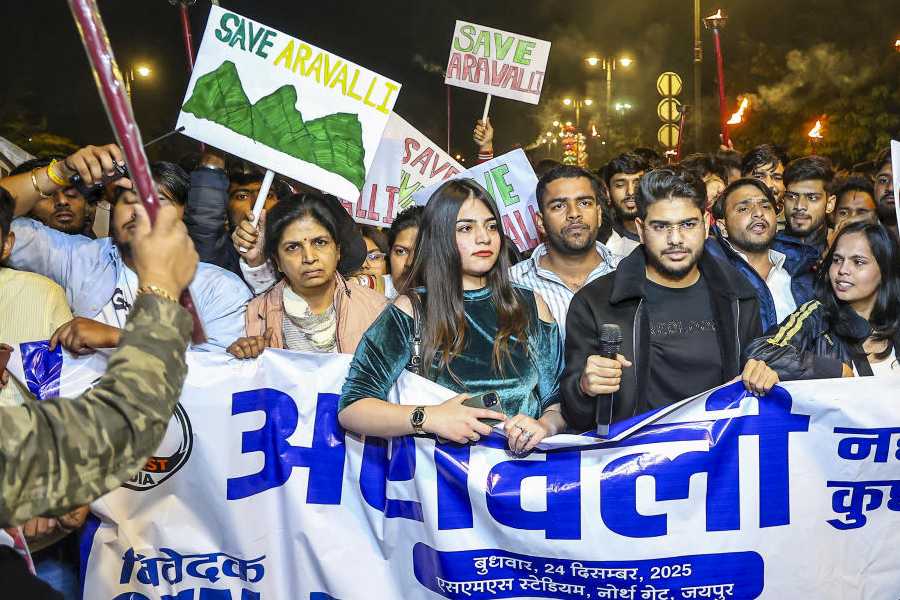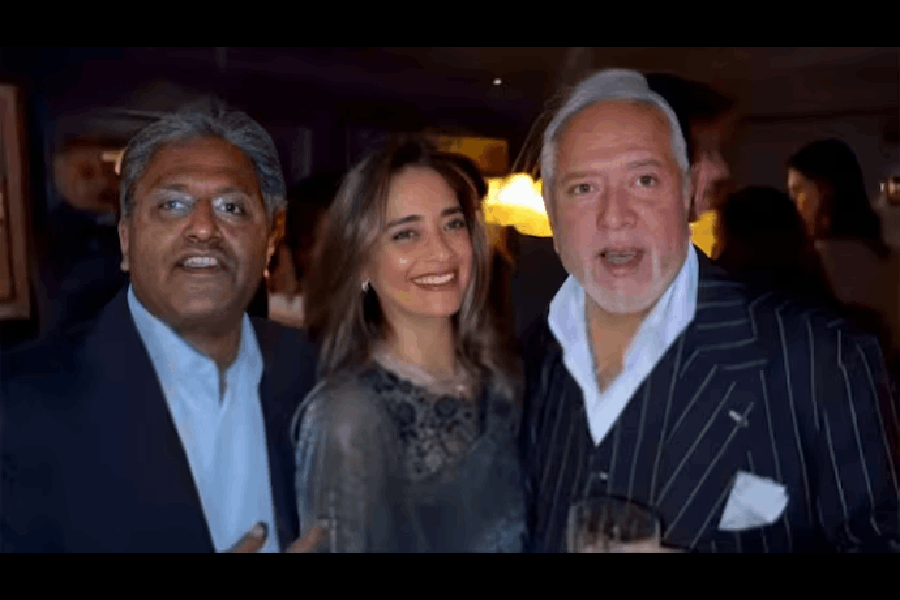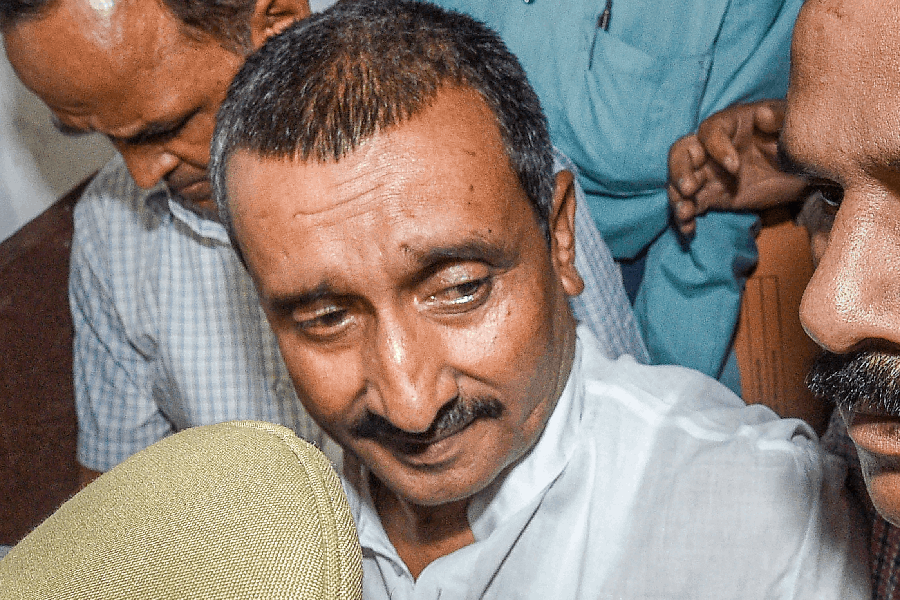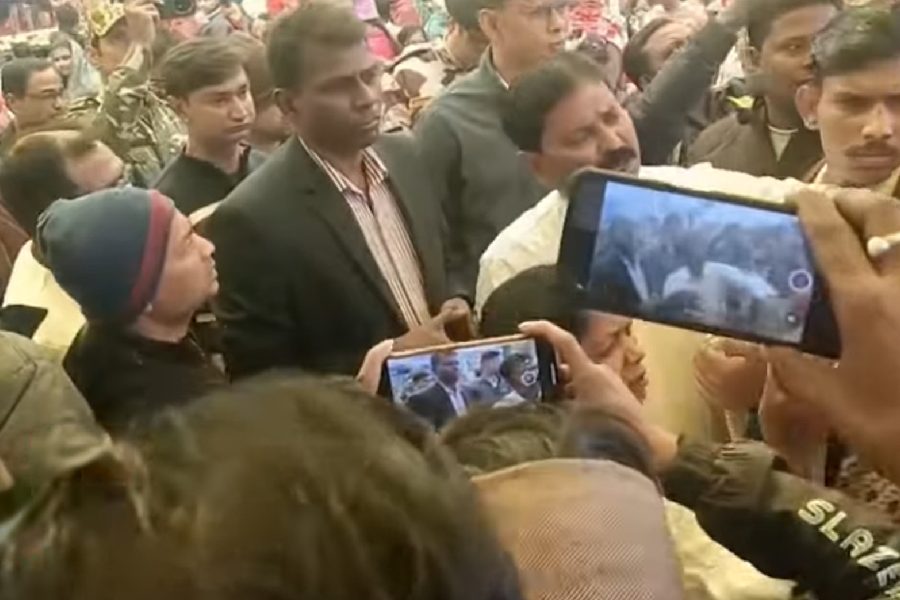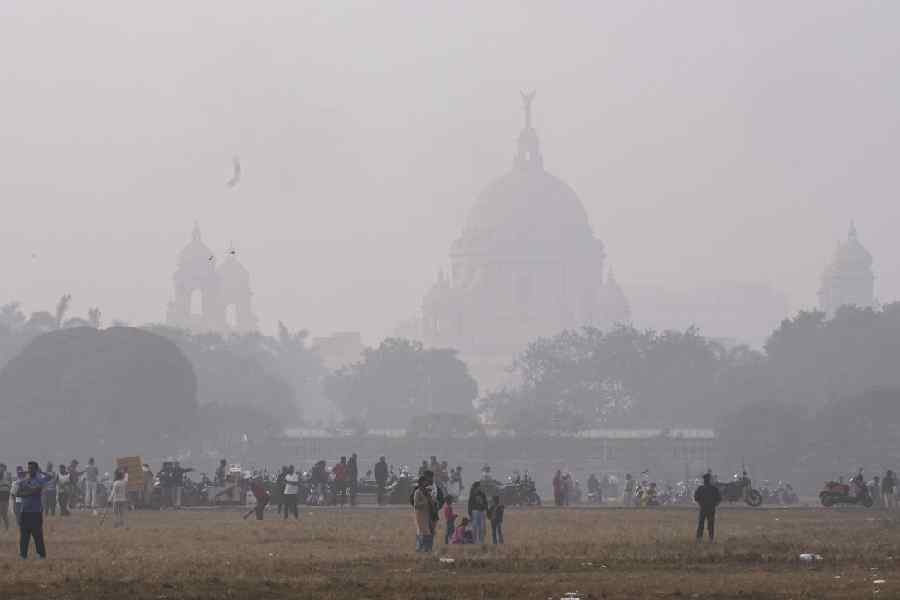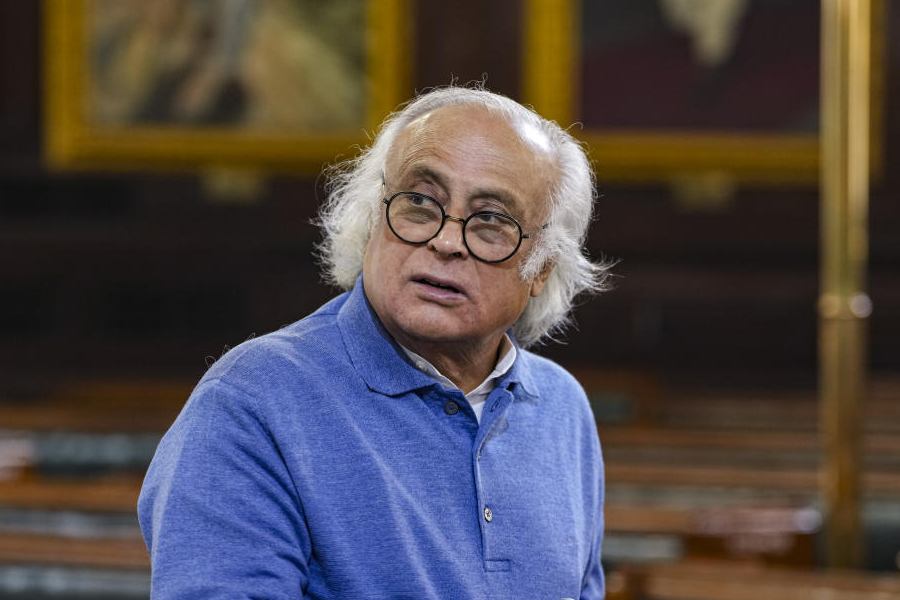 |
| Paritosh Sen with a self-portrait |
Paritosh Sen, who died on Wednesday evening, belonged to that dying breed of artists that Calcutta once prided itself on, who were equally at home in sophisticated salons and also amidst the hustle and bustle of street life.
As a member of this near-extinct breed, Sen’s work was marked by a clarity of vision, and he was equally adept at writing and speaking with wit and erudition on an entire spectrum of topics from feminine beauty to Kalighat patas and avant garde art movements in the West.
Sen was born in Dhaka in 1918. His father Prasannakumar was a kabiraj, a traditional medical practitioner. His mother was Hemangini. Sen was the 17th of 20 siblings, who were brought up in a huge joint family. Sen has left behind a collection of colourful writings on his days in Zindabahar Lane, and his association with a giant tree near his home.
He went to Madras Government Art College in 1935 to be trained under Debiprasad Roychoudhury who made frank references to the female anatomy. Sen subsequently taught at Indore for some time.
At the forefront of artistic movements of his time, he, along with such contemporaries as Nirode Mazumdar, Pradosh Dasgupta, Rathin Maitra, Subho Tagore, Prankrishna Paul and Gopal Ghose, had formed the Calcutta Group in 1943. At least three years before M.F. Husain, Gaitonde and Souza had founded the Progressive Artists’ Group in Mumbai, these Calcutta artists had ushered in modernism into India art.
Sen pursued his artistic training in Paris at the Academie Andre Lhote, Academie la Grande Chaumiere, Ecole des Beaux Arts and the Ecole des Louvre.
Upon his return to India in the mid-1950s, Sen threw himself headlong into life in Calcutta, which, along with the lush vegetation of Bangladesh, had remained his lifelong inspirations.
The teeming life of the city had helped develop his humane vision of life. Peddlers, roadside barbers, bird sellers, playful urchins, Holi celebrations, bosomy young women — nothing escaped his eye.
During his stint in Jadavpur University, he had experimented with typography. He had been commissioned by the French government to design Bengali typography based on the script of Rabindranath Tagore.
The senseless violence of human beings, their small lusts, cruelty, sadism, miseries and anguish, love and sympathy found expression in his works. A draughtsman of the highest order, he could conjure up an image with a few fluent and sure strokes of his brush.
He was occasionally accused of being a diehard follower of Picasso, whom he had once met at his studio in Paris. But if one looked carefully enough, one would have realised that Sen borrowed liberally from many indigenous styles as well.
Sen had a robust sense of humour, and unlike most Indian artists, could make light of himself. He regularly portrayed himself as a primate with a plenitude of facial hair. His canvases often bristled with satire. He would take sly digs at well-stacked ladies engaged in various activities, erotic as well as mundane.
In spite of his advanced years, he used to paint for several hours everyday. At his 88th birthday celebration, he had said: “My technique is such that I am a very fast worker. My experience of over 60 to 70 years is a valuable asset. It has given me a certain facility.”
He had no patience for the degeneration of the quality of life in Calcutta. Yet he was never a naysayer. He always had faith in life.





